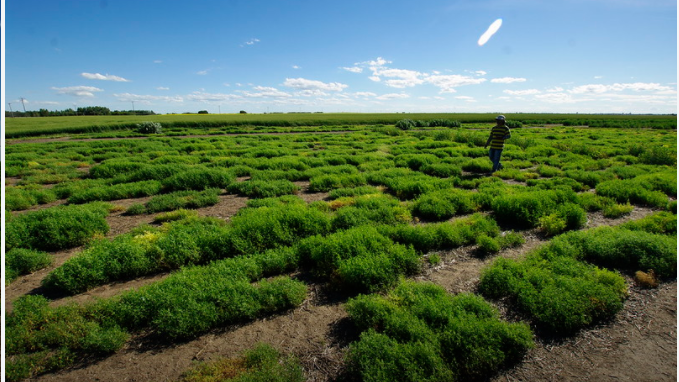Research Objective
To increase productivity and quality of Canadian lentils by widening the genetic base of the breeding program through effective use of un-adapted lentil germplasm and crop wild relatives.
Canada is the world’s largest producer and exporter of lentil (Lens culinaris). This success is largely due to advances in plant breeding at the University of Saskatchewan. Annual yield gain has been more than 3% since 2001 when the first of the Canadian-bred lentil varieties proceeded to commercial production. Due to local adaptation and grain quality constraints, however, breeding programs typically rely on a narrow range of germplasm, hampering genetic gain over time. Limited genetic diversity in the Canadian lentil breeding program is beginning to impede its ability to meet the demands of this growing industry. AGILE was designed to tackle this problem by enabling breeders to develop better lentil varieties through systematic use of diverse cultivated germplasm and wild relatives. The project outcomes are vital to enhancing the productivity and quality of Canadian lentils and in ensuring sustainability and long term prosperity of the industry.
In this project, we characterized the genetic variability available within the primary and secondary gene pools of genus Lens through genotyping and phenotyping. The information was used to determine the genetic basis of the contrasting adaptation characteristics of lentils from the three main growing regions. Breeder-friendly markers for tracking response to photoperiod, temperature, and light quality were generated. Resources and tools to allow breeders to better use exotic germplasm and wild relatives while reducing any negative impacts to adaptation were developed. The systematic study of symbiont diversity and their interaction with lentil germplasm allows for a better understanding of ways to improve nitrogen fixation in lentils. Data generated under this project have been made accessible to researchers, and eventually to the general public, through our web portal (https://knowpulse.usask.ca/). Access to superior cultivars does not automatically translate to adoption by farmers, particularly if they are unfamiliar with lentil crop production. Numerous factors influence crop production decisions, and a clearer understanding of these will help increase producer uptake of this important crop. Our GE3LS research identified factors that may influence producer decision making processes and propose a strategy for effective communication and knowledge exchange/transfer, which will encourage sustainable and profitable production of lentils in Canada. The results of AGILE will have broad social and economic impacts for Canada. In addition to increased productivity, improved cultivars will help the lentil industry to overcome emerging production constraints, changes in market demand, and help create new markets. Results from AGILE have allowed us to develop a more thorough understanding of lentil and its wild relatives. Resources developed by this project will improve the agility of the lentil breeding program by introducing genetic diversity with greater precision and speed up the breeding cycle. This project has also fostered international partnerships, which is critical for long-term success of the international lentil research community. Through the GE3LS activities we now have a better idea of why growers choose to grow lentil and some of the considerations the industry needs to keep in mind as we transition to a new mechanism for rewarding breeders for their tremendous efforts to keep Canada at the forefront of the lentil industry.

